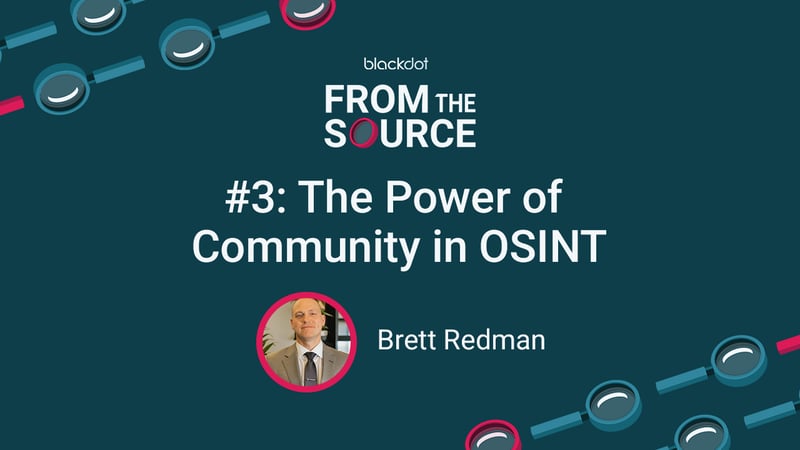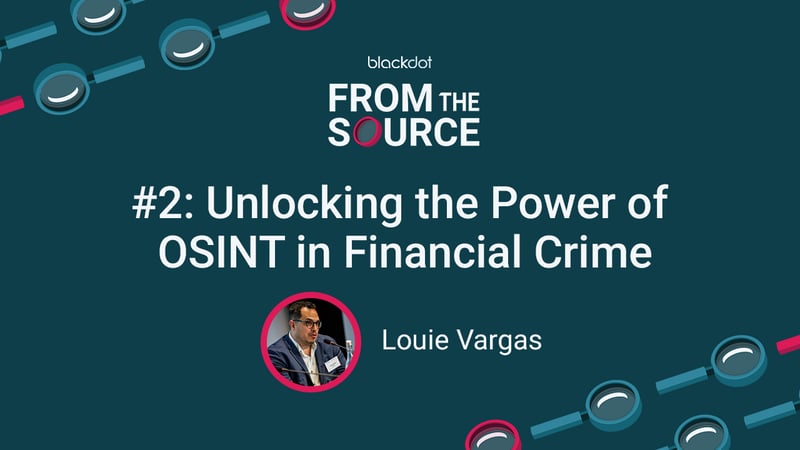Ritu Gill, president of the OSMOSIS Association, joined us for the latest episode of From the Source, a podcast by Blackdot. Read her valuable insights below or listen to the full episode here: OSMOSIS, Forensic OSINT and OSINT for good with Ritu Gill.
Ritu’s career in OSINT
Ritu completed a criminology degree and has more than 18 years of experience with Canadian law enforcement. She undertook several jobs within the sector before becoming a researcher, analyst, and, eventually, an open-source analyst. Earlier this month, Ritu spoke at a conference in DC, providing career lessons and takeaways to inspire and help people thrive in OSINT.
While many things have changed over the past two decades, for Ritu, factors like curiosity and the way you assess your customer needs remain as important today as they were 18 years ago.
‘I think the mindset is so important,” she states. ‘Critical thinking, but critically being able to look at a problem and ask questions about it to really get some of that thought process going.’
Understanding the OSMOSIS Association
The OSMOSIS Association is for OSINT professionals and offers an open-source accreditation, the OSC, which requires you to pass a hundred-question exam. Training includes critical thinking, law, ethics, and report writing.
‘We want people to do OSINT for good. We want people to engage with other people who are doing it in a professional and ethical manner. So ethics is a big part of what we do as well,” says Ritu.
While there is no single set of standards required or used across the industry, OSMOSIS has adopted the Berkeley Protocol as its guidepost, which ‘identifies international standards for conducting online research of alleged violations of international criminal, human rights, and humanitarian law’.
Report writing and understanding the ‘so what?’
While it’s not the most exciting topic in OSINT, Ritu believes that report-writing skills are vitally important. In particular, she wishes someone had walked her through report-writing skills earlier in her career, so that her ability to communicate outcomes had matched her research skills.
‘I feel like if we could have connected those two dots a little earlier on it would have made my life easier, but it would have also made it better for who I was working for at that time as well,’ she explains.
When it comes to good report writing in OSINT, it’s essential to answer your customers' questions and provide them with answers to any potential ‘so what?’ questions. This is particularly important if you have to present your report in court.
‘If you can do the research but you can't explain what the findings are, then what's the point of the research? That's why report writing is so important,’ she explains.
AI: the robotic elephant in the room
When using AI in OSINT, Ritu believes it’s about knowing your limits and keeping yourself in check. This includes asking the right questions to understand the mechanics of the tool before you use it.
‘If you know how to incorporate it into your workflow, it could really help you,’ begins Ritu. ‘But it can also be a detriment if you don't.
Whether it’s AI or another OSINT tool, she suggests considering factors such as the tool’s ownership and provenance, how long it has been around and who its customers are. Then, you can decide whether the tool is right for you, your industry and the level of sensitivity you require.
She adds that biases, inaccuracies, AI tools using your data to train models, and potential leaks are all risks to consider.
Co-founding Forensic OSINT
Forensic OSINT is a Google Chrome extension for OSINT investigators who need to save online content, co-founded by Ritu.
‘If you don't capture your findings, they could be gone tomorrow. And that's happened. Lessons learned over the years,’ she begins. ‘Sometimes you think I'll just log in tomorrow, it'll be here. No, what if the target deletes something? What if the platform deletes it?’
The forensic-grade OSINT web capture software captures your online findings before they disappear and preserves them as evidence. To find out more, visit forensicosint.com.
Listen to OSMOSIS, Forensic OSINT and OSINT for good with Ritu Gill in full and stay tuned for even more OSINT insight on Blackdot’s next podcast episode.



